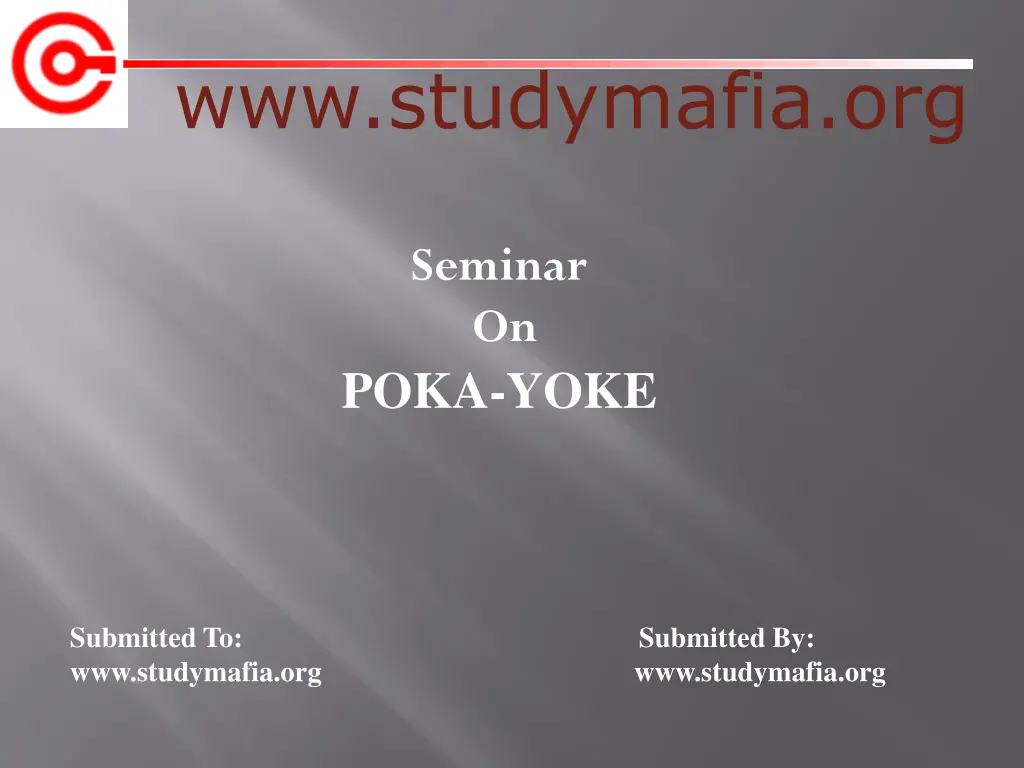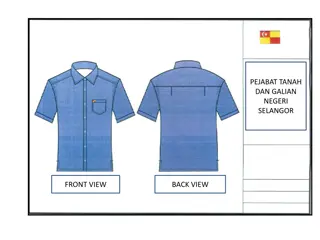
Understanding Poka-Yoke: Mistake-Proofing Techniques for Quality Improvement
Learn about Poka-Yoke, a Japanese concept for mistake-proofing processes, its importance, application across industries, and how it enhances quality and reliability by preventing errors. Discover examples and strategies to implement Poka-Yoke effectively.
Download Presentation

Please find below an Image/Link to download the presentation.
The content on the website is provided AS IS for your information and personal use only. It may not be sold, licensed, or shared on other websites without obtaining consent from the author. If you encounter any issues during the download, it is possible that the publisher has removed the file from their server.
You are allowed to download the files provided on this website for personal or commercial use, subject to the condition that they are used lawfully. All files are the property of their respective owners.
The content on the website is provided AS IS for your information and personal use only. It may not be sold, licensed, or shared on other websites without obtaining consent from the author.
E N D
Presentation Transcript
www.studymafia.org Seminar On POKA-YOKE Submitted To: www.studymafia.org Submitted By: www.studymafia.org
Introduction What is Poka-Yoke? Why is it important? When to use it? What Does Poka-Yoke Do? How to use it? Are Errors Unavoidable? Poka-Yoke Example Conclusion
Poka-yoke(POH-kah YOH-kay) Japanese for mistake-proofing; a poka-yoke device is any mechanism that either prevents a mistake from being made or makes the mistake obvious at a glance. The term was introduced by Shigeo Shingo, who was one of the industrial engineers at Toyota. He has been credited with creating and formalizing Zero Quality Control (ZQC), which relies heavily on poka-yoke. The term has been widely used internationally for over a decade.
This is known as MISTAKE-PROOFING From Japanese: Yokeru (avoid) Poka (inadvertent errors)
Helps people and processes. Refers to techniques that make it impossible to make mistakes. Helps drive defects out of products and processes and substantially improve quality and reliability. Used to fine tune improvements and process designs from six-sigma. Use the ideas and methods in product and process design which can eliminate both human and mechanical errors.
It is a technique, a tool that can be applied to any type of process be it in manufacturing or the service industry. Poka-yoke can be used wherever something can go wrong or an error can be made.
Errors can be of any type- Processing Error: Process operation missed or not performed per the SOP. Setup Error: Using the wrong tooling or setting machine adjustments incorrectly. Missing Part: Not all parts included in the assembly, welding, or other processes. Improper part/item: Wrong part used in the process. Operations Error: Carrying out an operation incorrectly; having the incorrect version of the specification. Measurement Error: Errors in machine adjustment, test measurement or dimensions of a part coming in from a supplier.
Eliminates the cause of an error at the source; Detects an error as it is being made; Detects an error soon after it has been made but before it reaches the next operation.
Step by step process in applying poka-yoke: 1. Identify the operation or process 2. Analyze the 5-Ws and understand the ways a process can fail. 3. Decide the right Poka-yoke approach, such as using a, Shut out Type: Preventing an error being made, or an Attention Type: Highlighting that an error has been made.
4. Determine whether a Contact Method Constant Number or Counting Method Motion-Sequence Method 5. Trial the method and see if it works. 6. Train the operator, review performance and measure success.
There are two approaches to dealing with errors: 1. ERRORS ARE INEVITABLE! 2. ERRORS CAN BE ELIMINATED!
People always make mistakes. While we accept the mistakes as natural, we blame the people who make them. With this attitude, we are likely to overlook defects as they occur in production. They may be detected at final inspection, or worse still, by the customer.
Any kind of mistake people make can be reduced or even eliminated. People make fewer mistakes if they are supported by proper training and by a production system based on the principle that errors can be avoided.
Human errors are usually inadvertent. Poka-yoke devices help us avoid defects, even when inadvertent errors are made. Poka-yoke helps build quality into processes.
Control (prevention): The disc is only able to be inserted in one orientation.
Control (prevention): The disc is only able to be inserted in one orientation.
Shutdown (Prevention): Newer mowers are required to have a safety bar on the handle that must be pulled back in order to start the engine. If you let go of the safety bar, the mower blade stops in 3 seconds or less.
Focus on building quality into the process. remember to consider the sources of variation, engage GB and BB support. make it impossible to create a defect. Believe that inadvertent errors can be eliminated. engage the people in the process. 10 heads are better than one. Implement the best ideas after you find the root cause chase through the five why s , then . Brainstorm to get to the best solution to attack root cause. No more excuses! Build a culture that finds a way to do it right the first time and does not tolerate errors!
Simple and cheap Part of the process, permitting 100% inspection Placed close to where the mistakes occur, providing quick feedback Designed to stop a particular mistake A detection device cannot provide a complete error proof solution
www.studymafia.org www.google.com www.wikipedia.com






















